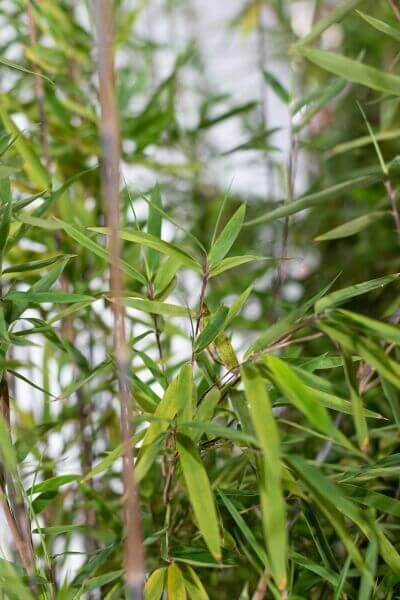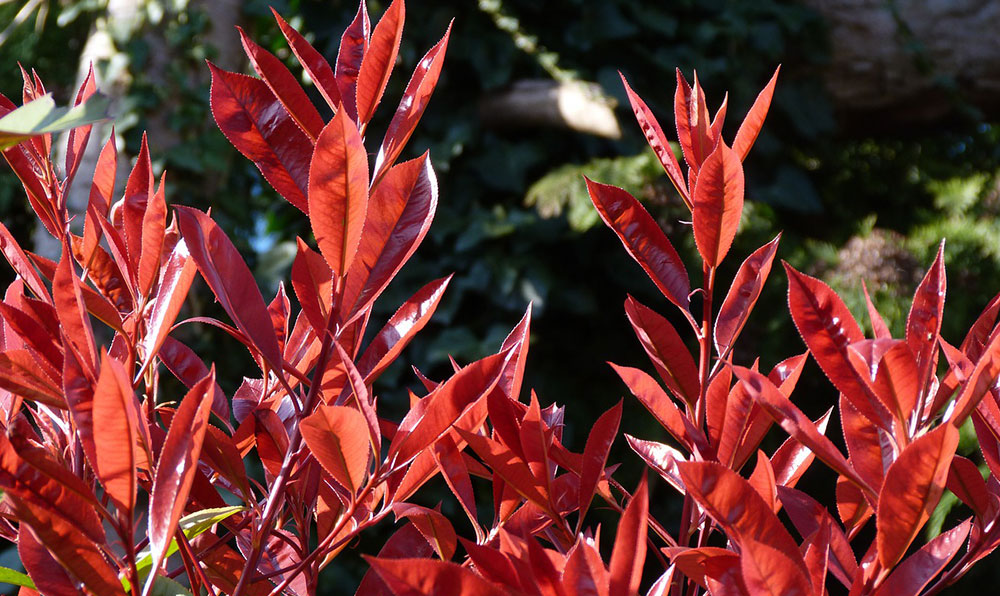Hedge Plants For Statement Hedges
Hedge Plants For Statement Hedges
Blog Article
Evergreen Hedge Plants For Year-round Greenery
Boost your garden's attraction with rich hedge varieties such as Yew (Taxus), Thuja, Laurel, Photinia, and Bamboo, commemorated for their structural stability and ecological benefits.
Yew and Thuja supply evergreen coverage and winter season resilience, while Laurel provides quick growth and broad, aromatic leaves.
Photinia adds seasonal appeal with its lively red foliage, and Bamboo lends a low-maintenance, peaceful atmosphere.
These hedges enhance air quality, decrease sound, and develop tranquil, private spaces.
Correct planting, spacing, and maintenance guarantee energetic development and ecological harmony.
Check out how these lavish varieties can elevate your garden's charm and wellness.
Secret Takeaways
Transform Your Garden With Lush Hedge Ranges
- Select Yew for its thick, evergreen growth and unrivaled durability.
- Go with Laurel for its quick growth and broad leaves, ensuring quick personal privacy.
- Select Photinia for its lively seasonal foliage, which turns a striking dark red.
- Make use of Bamboo for a low-maintenance, winter-hardy hedge with aesthetic appeal.
- Space plants 2-3 per meter and prune routinely for ideal development and health.
Popular Hedge Plants
When changing a garden with rich hedge ranges, it's important to consider popular hedge plants such as Yew, Thuja, Laurel, and Photinia due to their special attributes and advantages.
Yew (Taxus) is extremely respected for its durability and thick, green development, making it a prime option for withstanding landscapes.
Thuja is kept in mind for its evergreen foliage and robust winter season strength.
Photinia includes seasonal vibrancy with red leaves that darken with time, developing vibrant visual appeal.
Laurel uses fast development and fragrant, broad leaves, suitable for quick privacy.
Furthermore, Bamboo is an outstanding option for atmosphere, providing a low-maintenance, winter-hardy choice that enhances the garden's aesthetic with its elegant, swaying walking canes.
These choices accommodate a variety of horticultural needs and choices.
Advantages of Garden Hedges
Garden hedges provide a wide range of benefits, making them an important addition to any landscape. These natural barriers are economical to execute and provide substantial wind security, improving air circulation and adding to noise reduction. The thick foliage of hedges like Thuja and Beech guarantees personal privacy by blocking visibility, developing a secluded and tranquil environment.
Hedges also play a crucial function in microclimate regulation, supplying a stable environment that cultivates plant growth and decreases temperature variations. Their elaborate leaf structures filter toxins, enhancing air quality and contributing to a healthier garden environment.
Moreover, hedges stand out in noise decrease, soaking up and deflecting sound waves to lower ambient sound levels. This dual performance of supplying both acoustic and visual personal privacy improves the total tranquility and aesthetic appeal of any garden.
Planting and Upkeep Tips
For a successful hedge, precise preparation of the planting area is essential. Guarantee the soil has appropriate pH and drain to support strong root advancement.
Space the plants appropriately for the picked species. Water the hedge regularly throughout its initial development stage, changing as needed with seasonal changes.
Carry out a methodical insect control and illness avoidance strategy, using chemical or natural treatments when necessary. Routinely check for aphids, termites, and fungal infections.
Apply mulch to retain wetness and reduce weeds. Seasonal pruning promotes dense development and air circulation, important for plant health.
Following these standards will assist you cultivate a lively, well-kept hedge that boosts the charm of your garden.
Spacing and Cutting Guidelines
Spacing and Trimming Guidelines
Appropriate spacing and cutting are vital for cultivating healthy, aesthetically appealing hedges. Appropriate spacing ensures each plant gets sufficient nutrients, light, and airflow.
Follow these guidelines for optimal hedge maintenance:
- Spacing: Position hedge plants 2-3 plants per meter to encourage robust growth.
- Pruning Techniques: Regular pruning is essential for maintaining desired hedge height and shape. Cut brand-new development in summer season and cut down older wood throughout winter season.
- Seasonal Care: Adjust trimming schedules and techniques according to seasonal requirements to ensure plant health.
- Hedge Height: Routinely display and cut to preserve the preferred hedge height and achieve uniform aesthetics.
Complying with these actions will ensure your hedge flourishes, boosting both the appeal and performance of your garden.
Selecting the Right Hedge
Choosing the Right Hedge
Picking the appropriate hedge involves evaluating elements such as fully grown height, foliage density, and environmental durability. Successful hedge plant selection requires understanding each species' growth characteristics and site-specific versatility.
For example, Yew (Taxus) uses outstanding durability and thick development, while Thuja is noteworthy for its winter durability. Additionally, thinking about maintenance requirements is crucial; fast-growing types like Laurel or Privet demand routine trimming, whereas low-maintenance alternatives like Bamboo or Ivy might be preferable for those looking for minimal maintenance.
Ecological elements such as soil type, light schedule, and moisture conditions need to also assist the selection procedure. This careful method makes sure the selected hedges will grow, providing both functional and visual advantages to the garden landscape.
Shipment and Planting Advice
To ensure your hedge plants flourish, they ought to be delivered by specialized couriers and planted quickly upon arrival.
Follow these important steps for successful planting:
- Soil Preparation: Improve the soil with raw material to enhance drainage and nutrient content.
- Planting Depth: Create a trench two times the width and equivalent to the depth of the root ball.
- Watering Methods: Water thoroughly after planting, keeping the soil regularly damp but not filled.
- Mulching: Use a layer of mulch to maintain moisture and suppress weeds.
Consumer Assistance and Service
Provided the essential function of prompt assistance in horticultural pursuits, our customer assistance team is readily available 6 days a week through telephone, email, and social media to use professional guidance and swiftly attend to any concerns. Their devotion to quick action times makes sure customer satisfaction by fixing queries connected to plant health, optimal planting approaches, and maintenance schedules.

-------------------
Within 24 hours
This thorough support group, reinforced by a stellar 9.3/ 10 consumer score, highlights our commitment to improving the gardening experience for each client.
Regularly Asked Questions
The Length Of Time Does It Take for Hedge Plants to Establish?
Hedge plants normally require one to 3 years to become totally established, with the specific duration differing by species and growing conditions.
Effective care throughout this crucial duration is essential for robust development. Consistent watering, watchful weed control, and proper fertilizer application are pivotal in promoting strong root advancement.
For instance, fast-growing species like Laurel might develop quicker, while slower-growing ranges such as Yew may take longer. Persistent maintenance speeds up the establishment procedure, resulting in healthy and thick hedges.
What Are the Best Hedge Plants for Privacy?
The concern of the finest hedge plants for privacy involves examining evergreen and deciduous options.
Evergreen hedges like Thuja, Laurel, and Cypress provide year-round protection, making sure constant privacy.
In contrast, deciduous hedges such as Beech use seasonal privacy, shedding leaves in colder months.
Key maintenance ideas for personal privacy hedges consist of routine trimming, fertilizing in spring, and proper spacing-- generally 2 to 3 plants per meter.
Additionally, consistent watering and diligent weed removal are essential for promoting healthy, dense growth.
Can Hedge Plants Draw In Wildlife to My Garden?
Yes, hedge plants can draw in wildlife to your garden by supplying essential advantages like shelter, food, and nesting sites, thereby enhancing regional biodiversity. For instance, yew, holly, and laurel are excellent for attracting birds, while ivy supports a range of pests.
However, it's crucial to keep in mind that there are some drawbacks, such as increased maintenance to manage bugs and routine upkeep. Carefully selecting and keeping hedge ranges can help balance these disadvantages and benefits, eventually cultivating a sustainable and vibrant ecosystem in your garden.
Exist Any Flowering Hedge Plants Available?
Yes, there are flowering hedge plants available that can boost the charm of your garden.
For example, Elaeagnus, likewise understood as Olive Willow, produces fragrant white flowers in the fall, including a touch of beauty.
Photinia, another popular choice, showcases lively red leaves that develop into an abundant green, producing a dynamic visual impact throughout the seasons.
To ensure these plants prosper, it's important to practice correct pruning methods and seasonal upkeep, such as trimming brand-new development in the summertime and cutting down in the winter.
These procedures will help preserve the health and visual appeal of your blooming hedges.
How Do I Prevent Bugs in My Hedge Plants?
To prevent insects in hedge plants, employ natural insect control approaches and maintain appropriate hedge care. Present advantageous pests like ladybugs, which take advantage of harmful insects, to develop a balanced environment.
Regularly inspect your hedges for indications of infestation and immediately get rid of any affected parts to prevent the spread. Guarantee the health of your hedges by applying well balanced fertilizers and providing sufficient water.
Make use of mulching to maintain soil wetness and proper spacing to reduce plant stress and promote robust growth. These practices jointly assist in reducing insect problems and maintaining a healthy hedge.
Conclusion
In essence, choosing the right hedge ranges such as Yew, Thuja, and Laurel can change any garden into a serene sanctuary. more info These plants offer year-round plant, improve aesthetic appeal, and offer useful advantages like noise reduction and wind defense.
Correct planting methods, accurate spacing, constant watering, and seasonal cutting are important for optimal growth.
Dependable delivery services and skilled client support make sure a seamless experience from purchase to planting, making it simpler than ever to elevate your outside space.
Garden hedges offer a plethora of advantages, making them a valuable addition to any landscape. These natural barriers are cost-efficient to execute and supply considerable wind protection, boosting air circulation and contributing to sound reduction. The thick foliage of hedges like Thuja and Beech ensures personal privacy by obstructing presence, creating a serene and secluded environment.

Pruning Techniques: Routine pruning is necessary for keeping wanted hedge height and shape. Cut new development in summertime and cut back older wood during winter season.
Report this page